Installation of furniture in the bathroom provides a mandatory mounting to the wall. If the wall is concrete or brick, then there will be no special difficulty. And if it is from asbetic or sheathed with sheet material? In this case, there are nuances
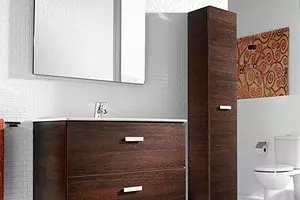
Installation of furniture in the bathroom provides a mandatory mounting to the wall. If the wall is concrete or brick, then there will be no special difficulty. And if it is from asbetic or sheathed with sheet material? In this case, there are nuances
Properly mounted mounted modules have many advantages both in operation and in the overall design of the bathroom. This room is often smaller than we would like, sizes, and the cantilever furniture looks more compact. Since under it the floor remains open, there are no moisture and dirt accumulated there. The same lack of support provides more opportunities for creativity of designers. However, the mounting module process is more complicated than the installation of furniture on the legs, since the entire load will be on the wall. Idello not only in the mass of the element. The deeper the furniture (under the depth it is understood as the distance from the wall to the front of the module), the greater the shoulder of the force acting on the fastener. A flat mirror or a shallow mirror cabinet and a cabinet with a sink with a depth of 40-50cm (namely, they are often different) when one and the same mass, there are different effects on the wall. Therefore, it is better if the fasteners are complete with furniture. However, it may not be there, or it is not suitable for the type of walls in your apartment.
For fasteners, the most important is the magnitude of the effort capable of snatching them from the wall. Its calculation is an engineering task that requires special knowledge. Thus, in the most general case, for the mounted locker, the total force acting on all fasteners is calculated as a product of the mass of the locker with the contents on its depth divided into two heights. Almost the calculated formula is even more complicated. Let us give an example: a mounted module for a sink of a meter width can have a mass of about 30kg, a meter sink from cast marble 20-25kg. A results of the cabinet with the sink will weigh more than 50kg. Active need to consider that you will climb on it, and the load on the whole wall in this case will be more. Add a mirror here, perhaps with a cabinet, and if the area is allowed, then the closet column. Total about 100kg and several reference points. It all needs to be taken into account when calculating.
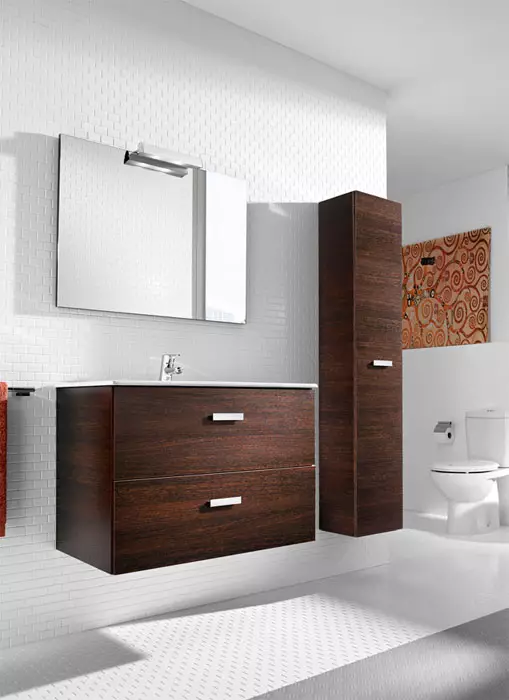
Roca. | 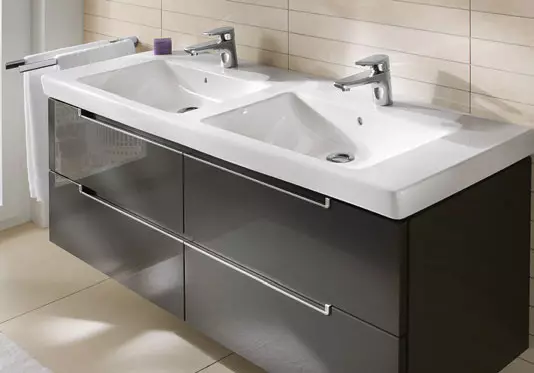
Villeroy Boch. | 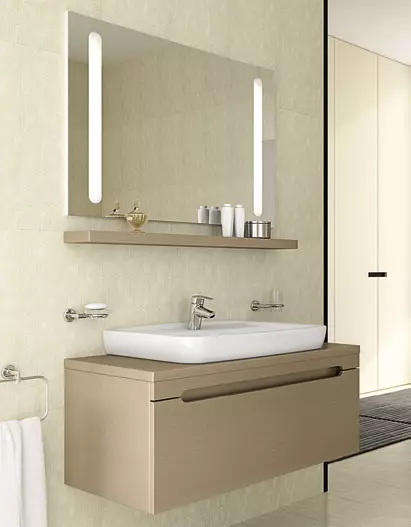
Vitra |
1. When choosing fasteners for the Victoria NORD kit, you should consider the overall load on the wall, which in this case will be significant.
2. Such a substole in a tandem with a double-cast shell can only be attached to the capital wall, and after fasteners you need to carefully close the sealant of the seam between the wall and the sink.
3. Attached to the wall and competently fixed substreet with an overhead sink visually expanding the space, makes the interior light and open.
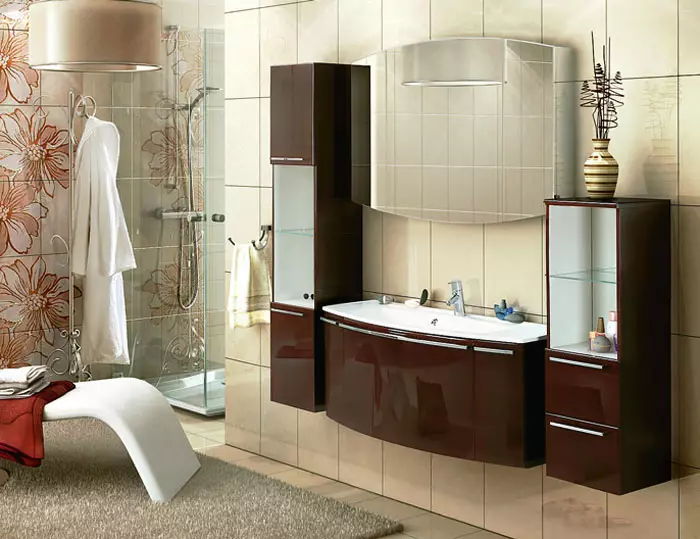
"Aquaton" | 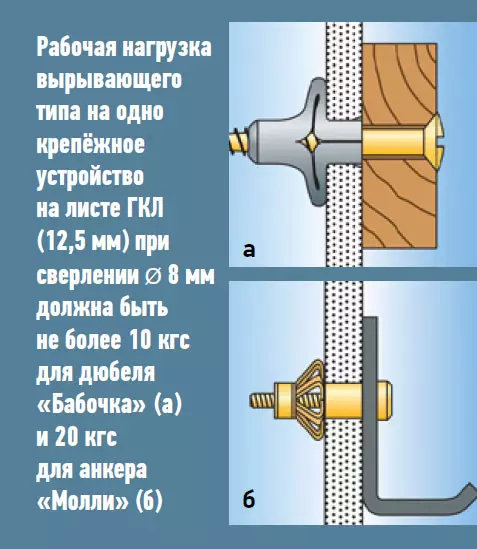
|
4. The set of furniture "Sevilla" for a spacious bathroom should be attached to the overhaul of dowels and self-tapping screws or special hooks with threads intended for furniture hanging.
If the wall is concrete or brick and lined with tiles or other materials of a small thickness, then everything is relatively simple. Armed with a drill or a perforator (for concrete), it is necessary to drill holes on the markup, to score a dowel there and screw the screws or thread hooks, intended for hanging furniture. The self-tapping screw (hook), entering the dowel, expands (squeezes) it, the dowel is tightly in the wall and keeps mainly due to the friction force. The furniture should not only hang, but also attract to the wall, and in the case of the fastening of the podstone under the sink, wash the sealant between the sink and the wall. Typically, modules are hanging on special, adjustable furniture canopies (different types), which, after installation, allow several millimeters to adjust the furniture to the left-right and up-down.
Some manufacturers install canopies, designed not to self-tapping screws or hooks, but on tires (mounting strips). This method of fastening is used for suspended kitchen elements, and in the bathroom most often for installation of cabinets and podstoliy large size. Alternative for fastening on metal anchors. It is more reliable than the "self-sufficiency + dowel", and it is better to use it for large-sized modules. The anchor is inserted into the velocked hole, and then when screwing the screw of the split sleeve, the lining of the split sleeve is moved and pressed to the wall of the hole, the shoulders are expanding and clamping it into the hole.
4 furniture installation councils in the bathroom
1. To the wall should be attached to any furniture, both wall and outdoor.2. When choosing fasteners, it is necessary to consider the material from which the walls are made.
3. Sheathing from drywall, asbatement and other sheet materials should be reinforced and use special fasteners.
4. Catching that the fasteners will withstand hinged furniture, do not forget to add and considerable weight of the contents of the cabinets, as well as loads that may occur when the sink is on the sink and a substolene during operation.
For walls covered with sheet materials, such as plasterboard, or for an asbotic septum, additional gain and special multifunctional fastenings of the butterfly type dowels are needed, whose hangers are scattered like a butterfly wings, when screwing a screw. When using the plasterboard is used, screw is screwed up until the shoulders will be squeezed almost to the state of the washer. It turns out that part of the wall is clamped on both sides outside the hat, and from the inside the squeezed dowel of anchor (these shoulders). Another type of fasteners Metal Anchor called "Molly" having three-four folding segments. Its use allows you to increase the uniformity of the load distribution over a large base area. Such anchors are usually made with a diameter of 8 to 14 mm and put on sheets thick from 6 to 38mm. Molly Wankers can be screwed screws and hooks of different shapes.
Puzzle gypsum blocks or plaster partitions strongly crumble, so it takes a fastening through the bolt, nut and a large flat washer. Listening to the use of foam blocks is better to use amplifying mortgages and secure them with a special anchor bolt of white plastic spirals. First, the hole is drilled, then the anchor is clogged, and then the screw or self-tapping screw.
Strengthening required
If you cover the walls with plasterboard, then the mortgage elements should be provided under it (it is possible from sheet steel, profile or bar) in the place where screws or anchors will be screwed up, and additionally strengthen these places. For example, fasten up vertical rails on the main wall and install mounting elements for canopies. Thus, the furniture will keep not plasterboard, but a capital wall. It turns out reliably and aesthetically.
The editors thanks the company "Aquaton" for help in preparing the material.
